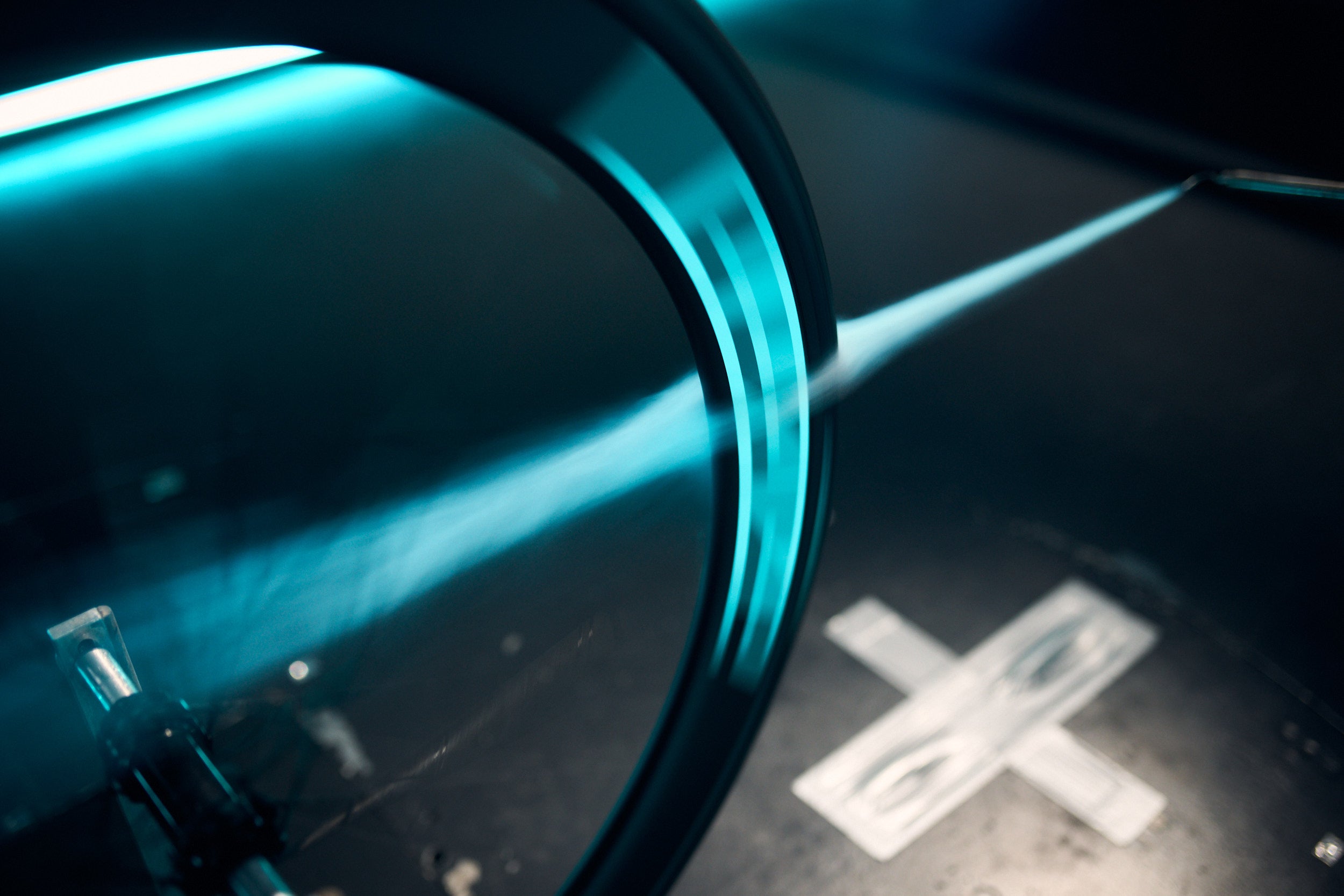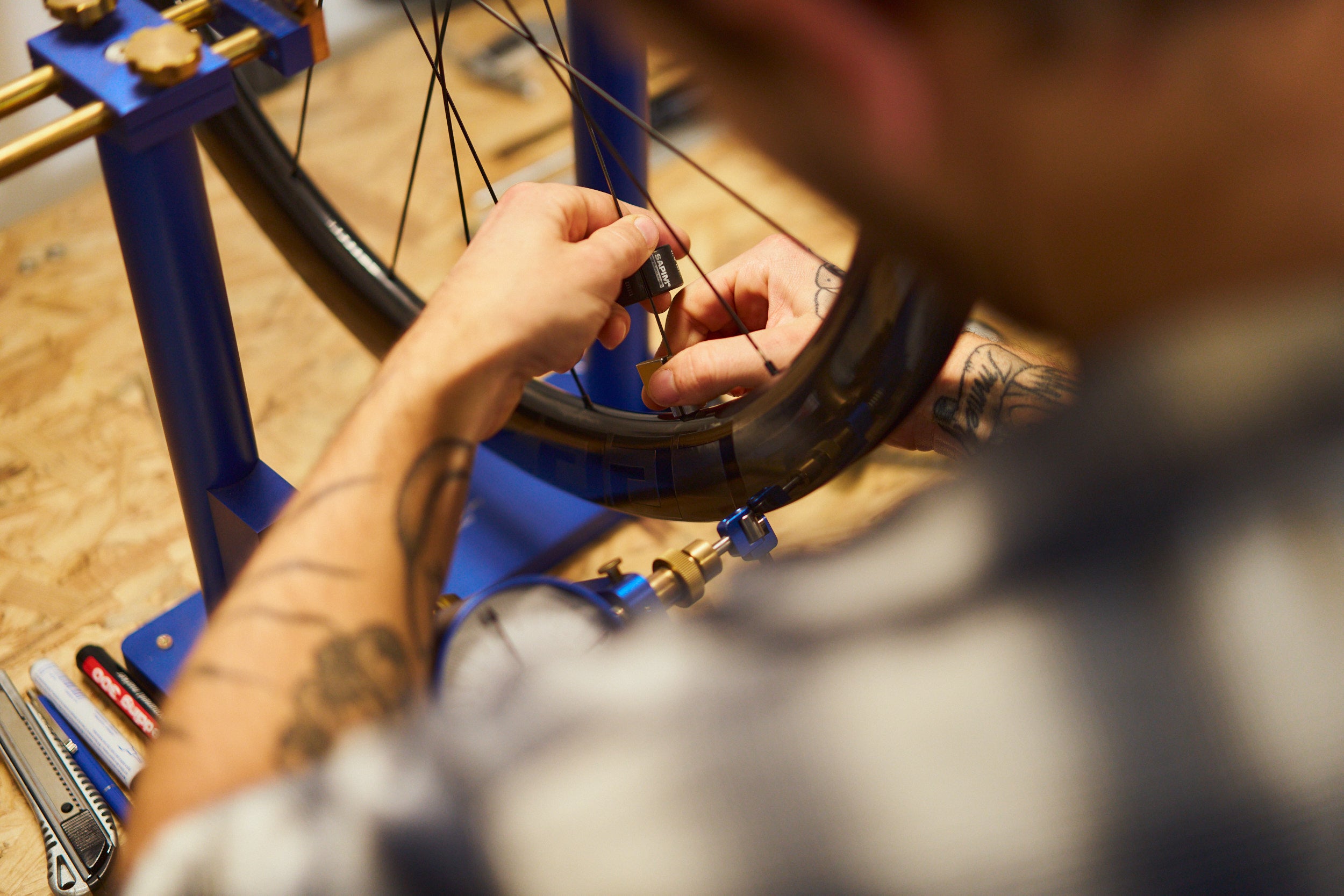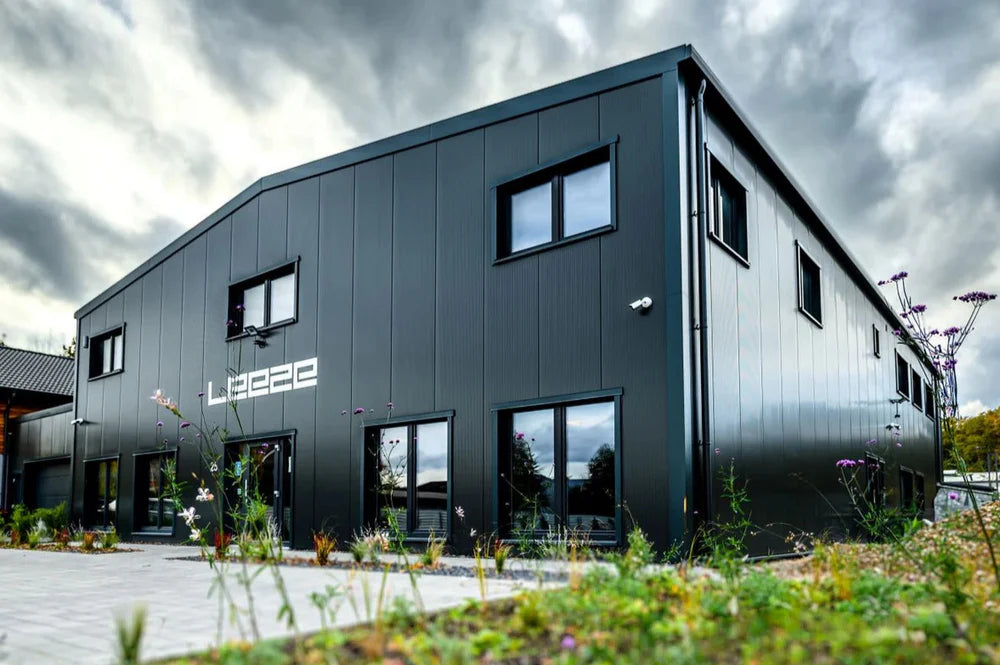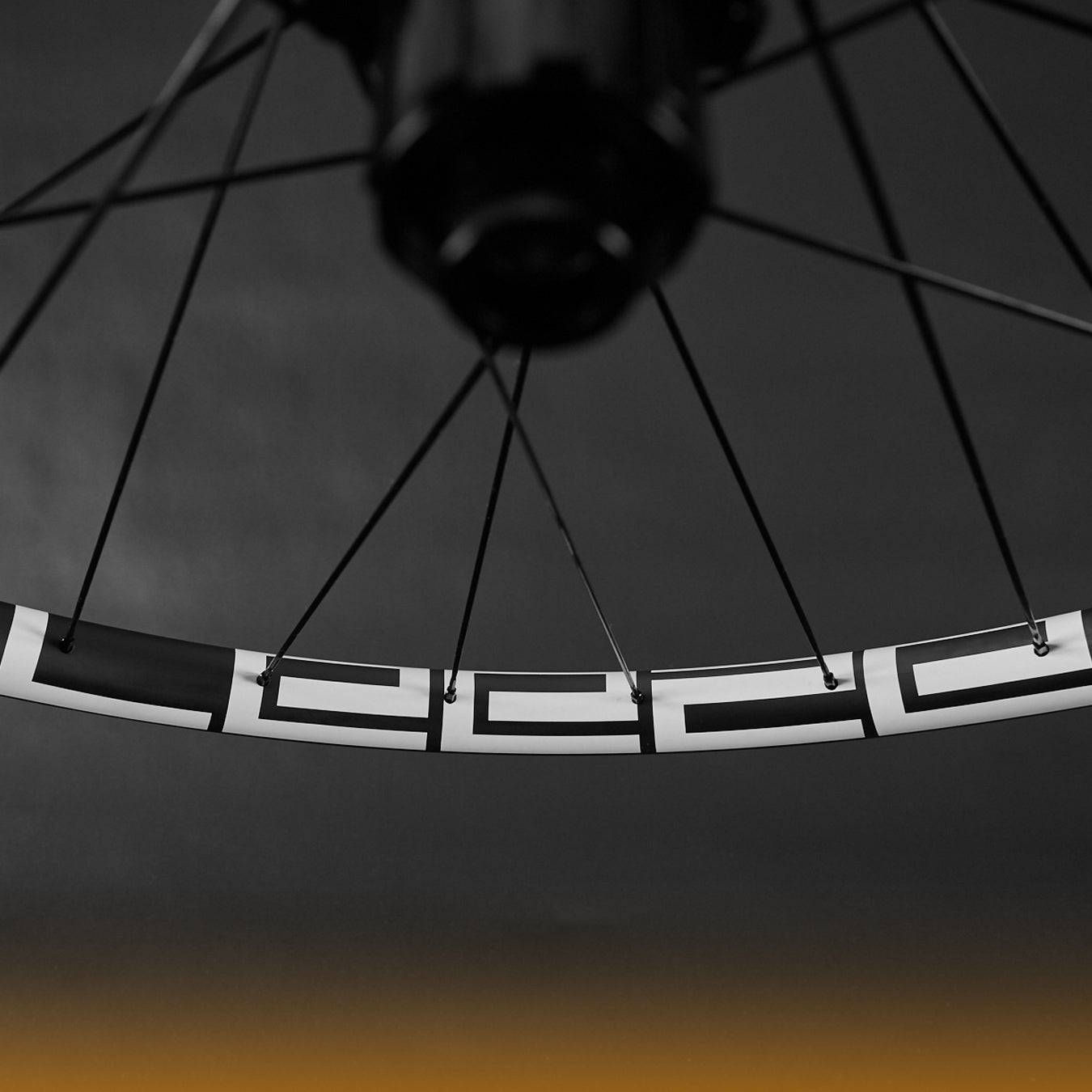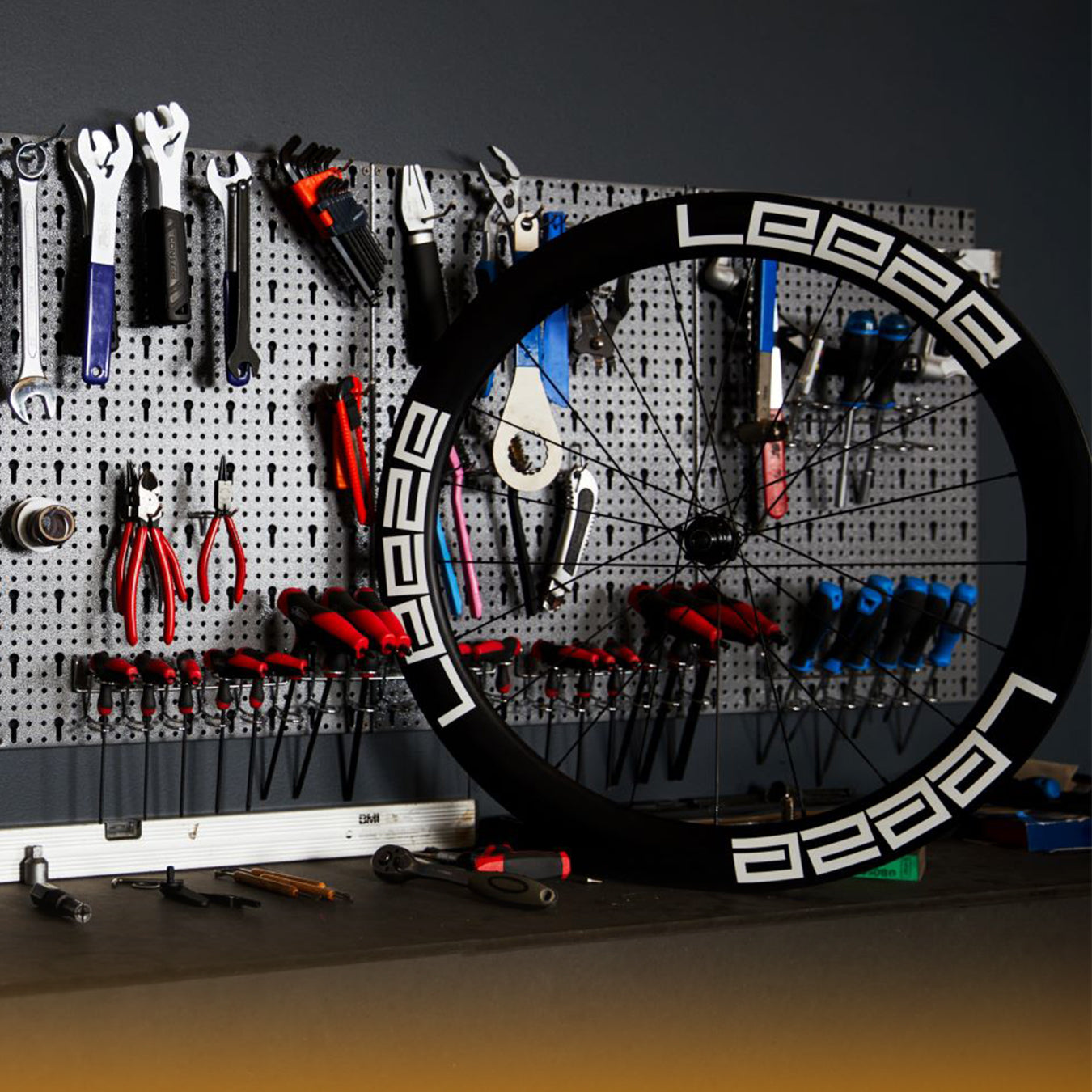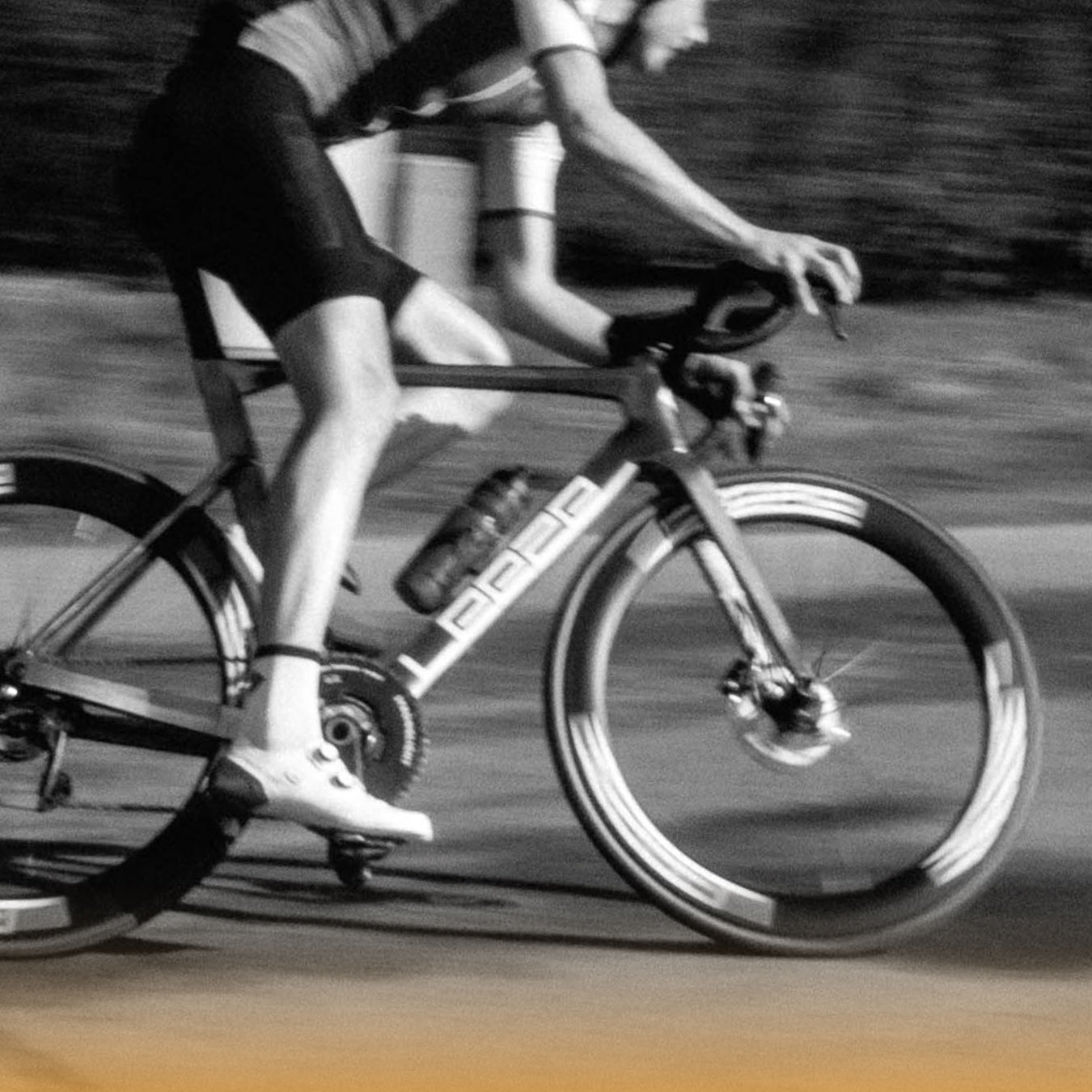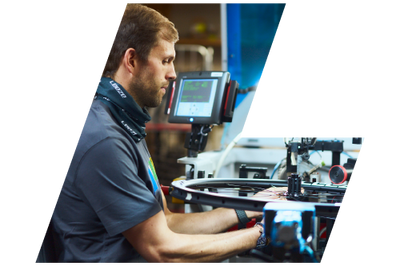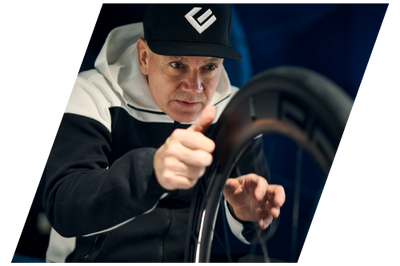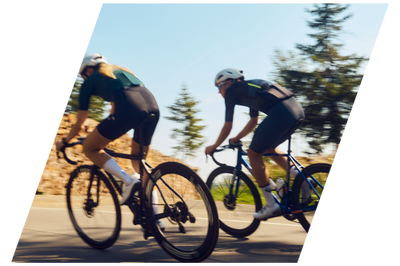Performance wheels - more complex than expected?
After we clarified the high demands that performance wheels have to fulfil in cycling in Part 1/3: Wheel requirements of our "Leeze Wheel 1x1" series, in the second part we take a closer look at the wheel itself. We will explain which central components make up the wheel itself and which other additional components turn the wheel into a fully functional wheel system.The three central components of the wheelset.
At its core, every Leeze wheel is made up of three central components: Rim, spokes and hub. We would like to explain the importance and function of these components in more detail below:
1. The rim
The rim is the outer ring-shaped part of the wheel that holds the tyre and forms the base to which the spokes are attached. It can be made of various materials such as carbon or aluminium. The choice of material and the shape of the rim influence the weight, stiffness and aerodynamics of the rim.
The rim tape is also located inside the rim. The rim tape is a strip of plastic or fabric that is wrapped around the rim base inside the rim. It is used to cover the spoke holes and thus protect the inner tube from sharp edges. Glued rim tapes (tubeless rim tapes) can also be used to completely seal a tubeless-compatible rim and allow it to be used without a tube.
2. Spokes
The spoke pattern is the system of spokes and nipples that connects the rim to the hub. The spokes are the thin rods in the centre of the wheel. There are different types of spokes with different cross-sectional shapes (e.g. round spokes or aerodynamically optimised spokes), as well as different spoke arrangements that influence the aerodynamics and stiffness of the wheel.
The nipples are the small bolts that hold the spokes to the rim. They can be made of different materials such as aluminium or brass and influence the weight and durability of the wheel.
3. Hub
The hub is the central part of the wheel, which rotates around an axle and contains the bearing. It forms the connecting piece between the spokes and the bicycle frame. The spoke holder of the hub is particularly relevant in wheel construction: This is the point on the hub where the spokes are attached. The stiffness and stability of the wheel can be influenced by the design of the spoke holder.
The hub bearings are also located in the hub: These enable the hub to rotate smoothly and efficiently around the axle. High-quality bearings contribute to better performance and durability of the wheel.
Another part of the rear wheel hub is the freewheel, on which the sprocket cassette is mounted and which establishes the connection to the drive train of the road bike. The freewheel makes it possible to vary or stop the pedalling while riding.
A high-quality hub with low-friction bearings and a reliable freewheel contributes to efficient power transmission, low rolling resistance and a responsive riding experience.
Additional components: How the wheel becomes a functional wheel system
In addition to the central components rim, spokes and hub, a wheel only becomes a fully functional wheel system with three additional components: tyres, pressure system and brake components.
1. Tyres
The tyres are the external layer of the wheel that makes contact with the road. They have a significant influence on the grip, rolling resistance and handling behaviour of the road bike. Choosing the right tyres can influence the performance of the entire wheel system. We offer optimised tyre packages for our wheels.
2. Tire Pressure System
The air/pressure system refers to the way the tyre is mounted on the wheel and how the air pressure in the tyre is regulated. Traditional wheels use tubes that are threaded into the tyre, while tubeless wheels use special tyres and rims to be ridden without a tube. Tubeless systems often offer lower rolling resistance and better puncture resistance, but require more maintenance.
3. Brake components
On road bikes with disc brakes, the brake discs and brake pads are important additional components. The brake discs are mounted on the hub and pressed together with brake pads to slow the bike down. The size of the brake discs and the choice of brake pads can influence braking performance: We offer different disc brake cofigurations here. With traditional rim brakes, the rim of the wheel is fitted with a brake track that is compressed by brake pads and thus slows down the wheel. Here, the interaction between the braking surface of the rim and the brake pad is crucial in order to achieve high braking performance without damaging the rim. Our Leeze Ultra Grip Carbon Plus brake pads also enable optimum braking performance on carbon rims and minimise the risk of heat damage.
It is now clear that in addition to the central components of the wheel (rim, spokes and hub), other additional components are crucial in order to turn the wheel into a fully functional wheel system. However, only the correct selection and coordination of all components can turn a functional wheel system into a high-performance wheel system that is suitable for the demands of road cycling. Therefore, in the third and final Part 3/3: Wheel configuration and optimisation, we would like to explain in more detail which adjustment screws can be used to optimise wheel systems for maximum performance.


